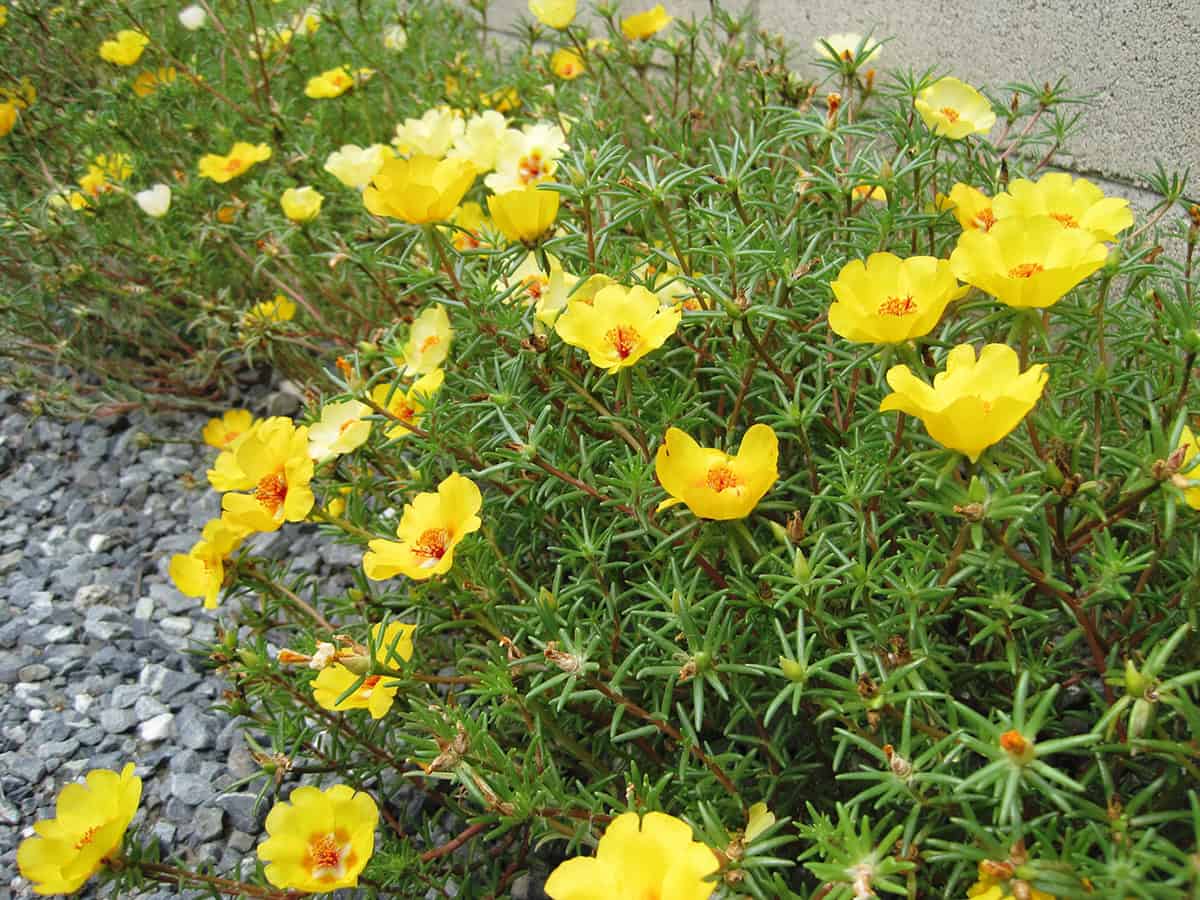You notice a neighbor’s garden filled with lush, green purslane, and you’re intrigued by its vibrant appearance and potential health benefits. Now, you’re eager to grow and care for purslane in your own garden. Learn how to cultivate this hardy, nutritious plant successfully with a complete guide to purslane care.
| Common Name | Purslane |
| Botanical Name | Portulaca oleracea |
| Family | Portulacaceae |
| History & Origin | Native to India and Persia |
| Plant Type | Annual succulent |
| Mature Size | 6-12 inches tall, 12-24 inches spread |
| Sun Exposure | Full sun |
| Soil Type | Well-draining, sandy or loamy soil |
| Soil pH | 5.5-7.5 |
| Temperature | 70-100°F |
| Watering | Drought-tolerant; water when soil is dry |
| Fertilizing | Rarely needed; light feeding if soil is poor |
| Bloom Time | Summer |
| Flower Color | Yellow, pink, red, white |
| Hardiness Zone | 2-11 USDA |
| Toxicity | Non-toxic to humans and pets |
| Common Problems | Overwatering, poor drainage, pests like aphids |
Table of Contents
Light
Purslane needs full sun to thrive. Full sun means your plant gets at least six hours of direct sunlight every day. When you choose a spot to place purslane, ensure it’s in a sunny area. Adequate light is essential for the healthy growth and flowering of this plant.
In regions with extreme heat, purslane tolerates partial shade. The partial shade will protect it during the hottest part of the day. If you notice any wilting, consider relocating your plant to a slightly shadier spot. This will prevent potential sun damage.
Your purslane can grow under less light indoors. Place it near a window where it can receive bright, indirect light. Rotate your plant occasionally to ensure all sides receive an equal amount of light. This even exposure promotes uniform growth.
Soil

To grow purslane, you need the right type of soil. Purslane thrives in well-drained conditions. The ideal mixture is sandy or loamy. This ensures that water doesn’t stay around the roots for too long. You can achieve this by adding sand or compost to your garden soil.
Your soil’s pH level matters. Purslane prefers a slightly acidic to neutral environment. Aim for a pH range between 5.5 and 7.0. You can test your soil with a kit from a garden store. Adjust the pH accordingly to provide the best growing conditions.
Keep your soil fertile. Rich soil supports healthy purslane growth. Integrate organic matter to boost the nutrients. It helps if you add aged manure or compost before planting. Do this yearly to maintain soil fertility.
Watering
Purslane requires minimal water. It thrives in dry conditions thanks to its drought-tolerant nature. You should water your purslane sparingly. Overwatering can harm the plant. Allow the soil to dry out between waterings.
When you do water, do it deeply. This encourages a strong root system. Deeply watered purslane is healthier and more robust. In cooler climates, water is less frequent. Purslane survives on less water when temperatures drop.
During hot spells, monitor the soil moisture. If it’s dry to touch, water your plant. Aim for early morning watering. This reduces water loss due to evaporation.
Temperature and Humidity
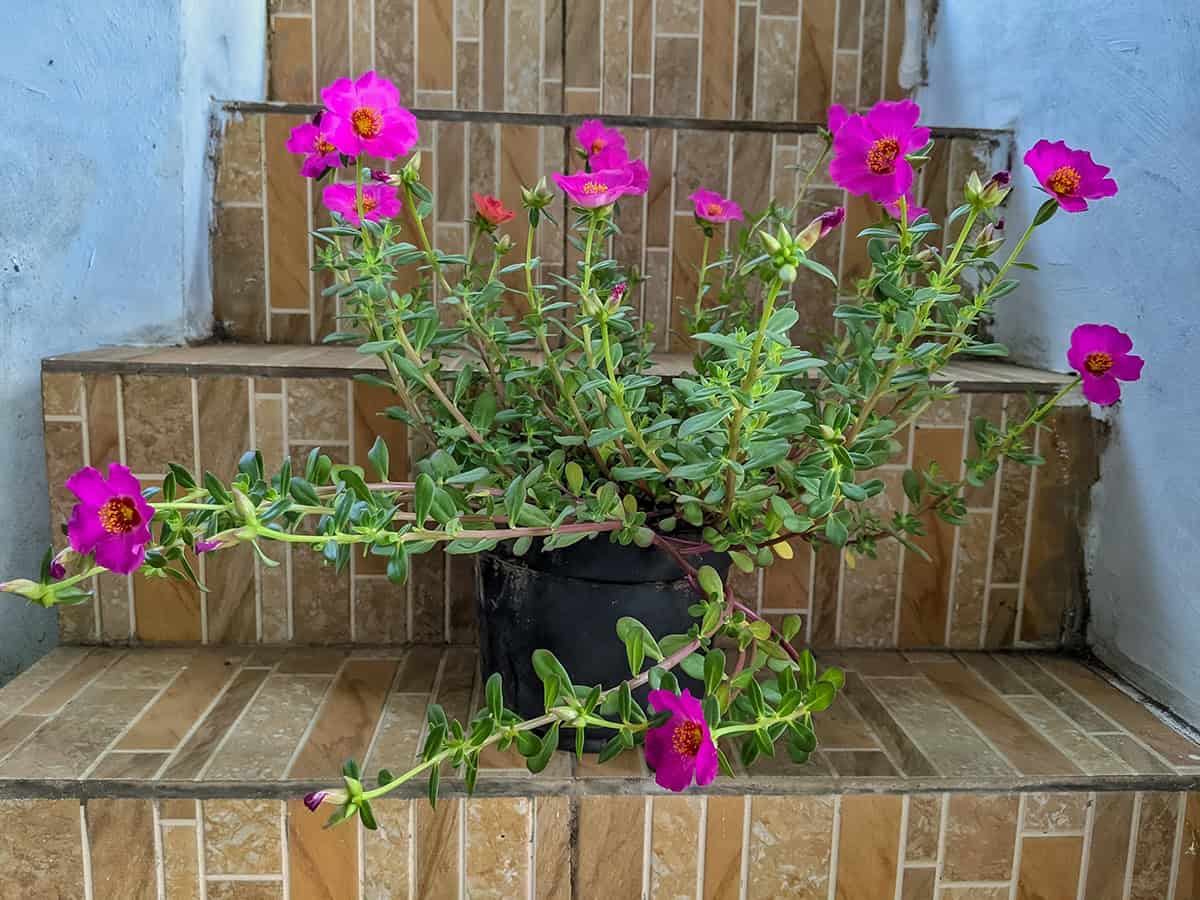
Purslane thrives in warmer temperatures. You’ll find your plant does best when the mercury stays above 60°F. As temperatures dip lower, growth may halt, and persistent cold can kill the plants. In contrast, high temperatures pose no threat, as purslane withstands heat well.
When it comes to humidity, purslane exhibits resilience. Relative humidity levels under 90% suit the plant, allowing it to grow without issues. This makes it easy for you to care for purslane in a range of environments. Avoid overwatering, as the purslane’s water needs are minimal. It also tolerates moderate salinity, adding to its hardiness.
Fertilizer
Purslane care includes minimal fertilizer use. You can support its growth with occasional feeding. A balanced, water-soluble fertilizer should suffice. Apply it to your purslane plants every four to six weeks during the growing season. This plant thrives without much help, making it ideal for beginners.
It is important to avoid over-fertilizing. Excessive nutrients, especially nitrogen, can lead to lush foliage with fewer flowers. Purslane’s natural hardiness means it often grows well in poor soil without additional fertilizer. If you choose to fertilize, do so lightly and infrequently.
During planting, you may mix in a slow-release fertilizer. This step provides a steady supply of nutrients to your purslane. Remember that a little goes a long way. Should you notice rapid leaf growth over flower production, scale back on the feeding.
Purslane, known for its succulent leaves and vibrant blooms, benefits from mild feeding routines. A nutrient-rich environment may diminish its flowering.
Propagation
Purslane is easy to grow. You can propagate this resilient plant in two main ways. One method involves planting seeds. For successful germination, sow the seeds directly into well-drained soil. The other method is transplanting seedlings. Ensure they are at least 10 cm tall before moving them.
In ideal conditions, seeds sprout within 10 days. Keep the soil moist but not waterlogged. Purslane thrives in full sunlight. Choose a sunny spot to plant your seeds or seedlings.
Summer is the best time to propagate purslane. This is when the plant naturally reproduces. Be mindful of the mat-forming growth, as purslane can spread quickly.
Careful handling of seedlings is crucial. They are delicate during the early stages of growth. Once established, purslane requires minimal care.
Pruning
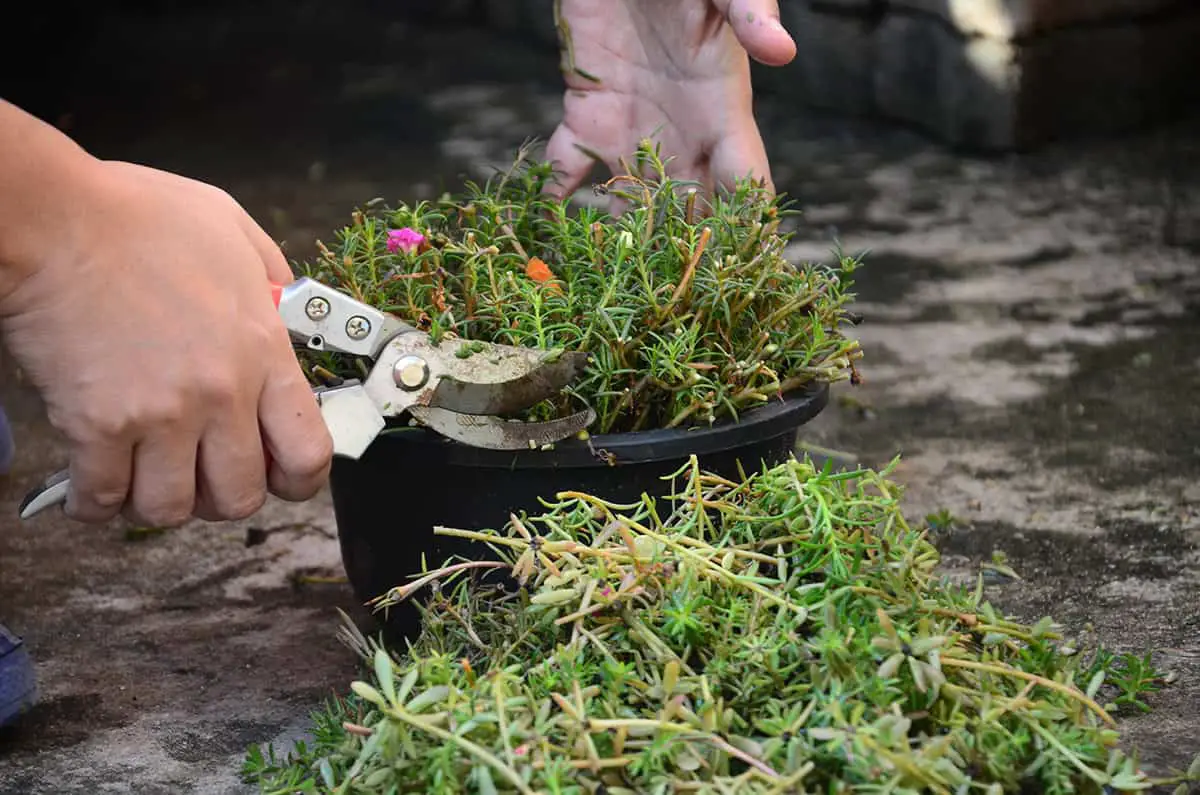
Pruning purslane enhances its growth and appearance. When you trim purslane, you encourage a bushier plant. Start by removing dead or yellow leaves. This keeps your plant healthy. Use clean scissors or shears. Cut back the stems just above a leaf node. Doing this increases the number of stems that will grow. Prune in the early stages of growth. This establishes a fuller purslane plant.
You must be gentle when pruning. Purslane stems are fragile and break easily. Prune during cooler parts of the day. This reduces stress on the plant. Always dispose of removed plant parts properly. This prevents any diseases from spreading.
Pruning is a simple, yet crucial care step. It ensures your purslane thrives. Regular pruning also allows light to reach the inner parts of the plant. Adequate light is essential for even growth.
Potting and Repotting

When you buy purslane, it often comes in a small pot. For healthy growth, transplant it into a larger container. Choose a pot with drainage holes to prevent waterlogging, which can lead to root rot. A general-purpose potting mix is suitable for purslane, as the plant isn’t picky about soil.
After a growing season, your purslane may need repotting. Signs include roots peeking out of the pot’s bottom or soil that dries out too fast. When repotting, go for a container that’s one size larger. This gives the roots more room without overwhelming them.
During repotting, handle the roots gently. Remove any dead or decaying matter. Place the plant in its new pot and fill around it with fresh potting mix. After repotting, water the plant thoroughly. This helps settle the soil and removes air pockets.
Regular repotting keeps your purslane thriving. It ensures that nutrients in the soil remain available to the plant. Plus, fresh soil improves drainage and aeration, which is vital for root health. Aim to repot your purslane every couple of years or as needed.
Common Problems & Troubleshooting
If you notice your purslane’s growth slowing down, first confirm water and light conditions are ideal. Purslane thrives in full sunlight and requires minimal water. Insufficient light or overwatering can stunt its growth.
Yellowing leaves suggest overwatering or poor drainage. Ensure your plant’s container has drainage holes. Cut back on watering to allow the soil to dry out between sessions.
Sometimes, purslane can attract pests like aphids. If you see small insects, wash them off with a gentle stream of water. For persistent problems, you might need an appropriate insecticidal soap.
For patches of purslane that seem wilted or brown, check for fungal diseases. Avoid watering from above to keep leaves dry. If necessary, remove affected areas to prevent spread.
Purslane Plant Varieties
Purslane comes in several varieties to suit your garden’s needs. Each offers unique colors, growth habits, and flowers, enriching your landscape with versatility and charm.
Portulaca Grandiflora (Moss Rose)
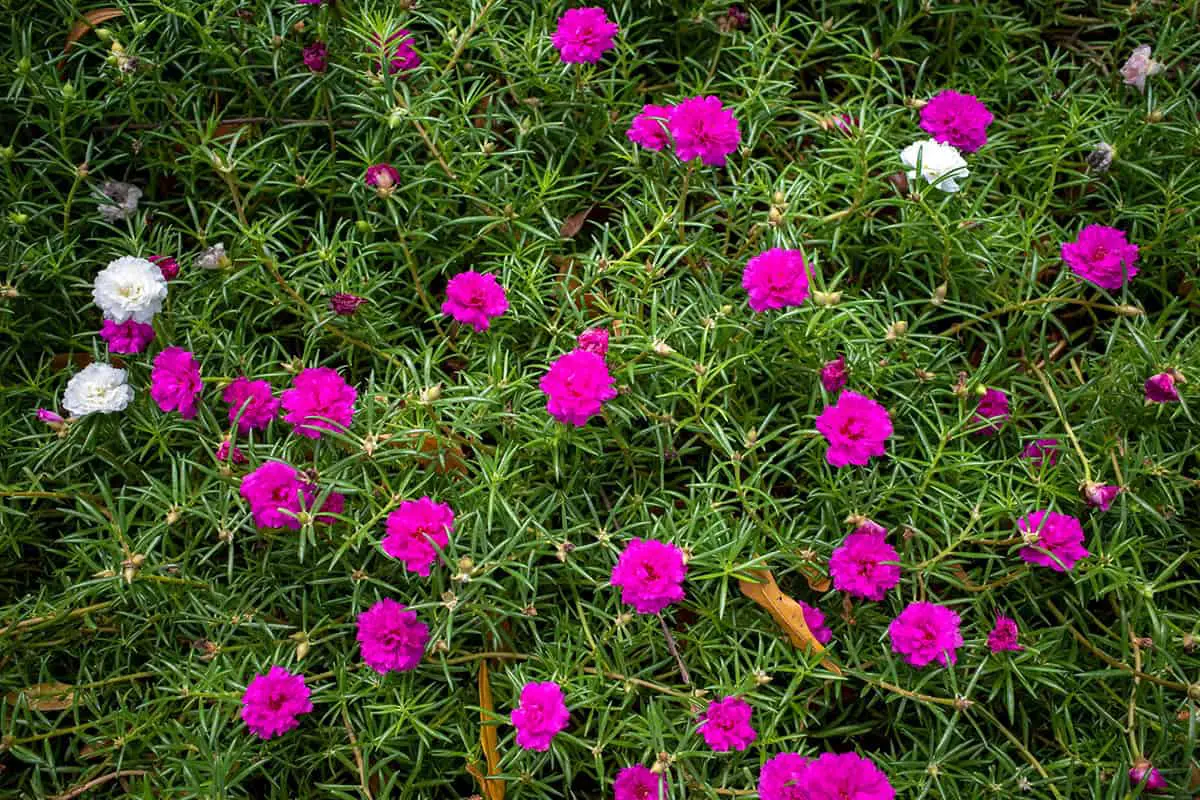
Moss Rose features showy flowers and succulent leaves. This variety thrives in hot, dry climates and bursts into bloom under full sunlight. Expect a carpet of vibrant, rose-like blooms.
Portulaca Oleracea (Common Purslane)
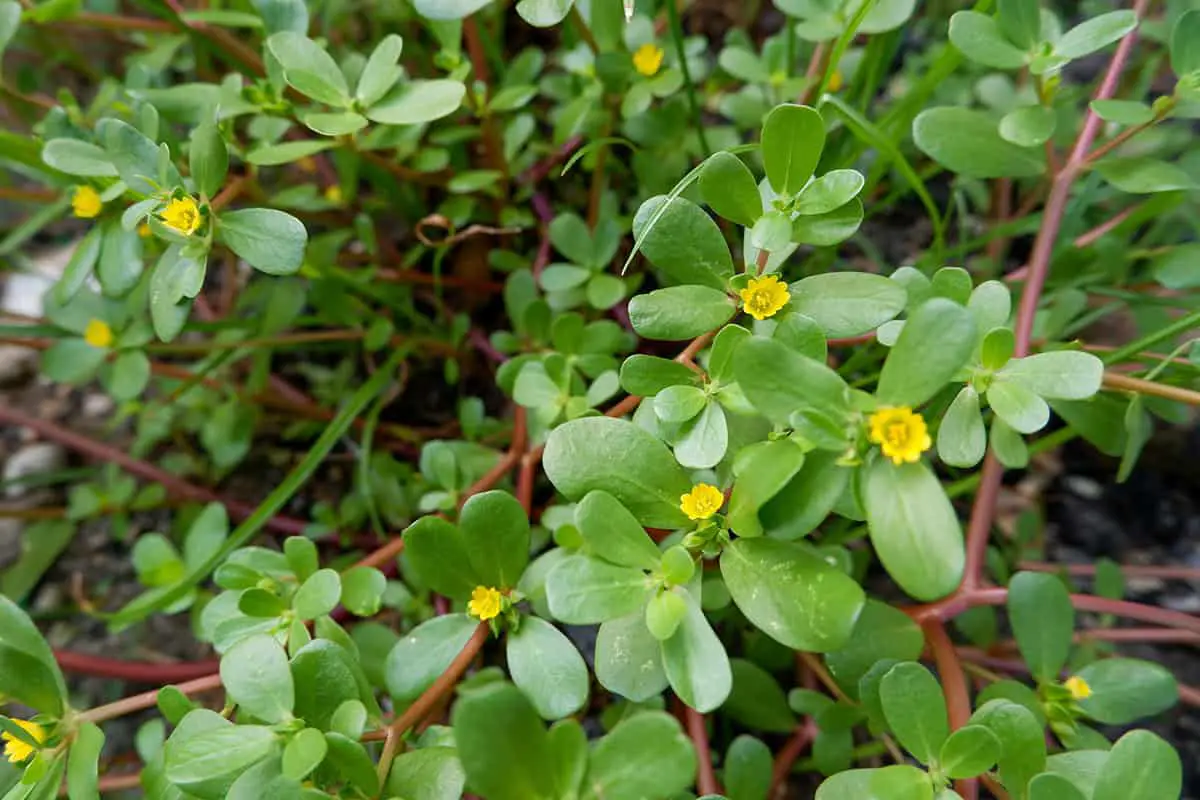
Common Purslane stands out with its fleshy, oval leaves and yellow flowers. This edible plant is renowned for its nutritional value and grows as a ground cover.
Portulaca Umbraticola (Wingpod Purslane)

Wingpod Purslane suits those looking for trailing plants. Your planters and hanging baskets will overflow with its colorful blossoms and thick foliage.
Portulaca ‘Sun Jewels’
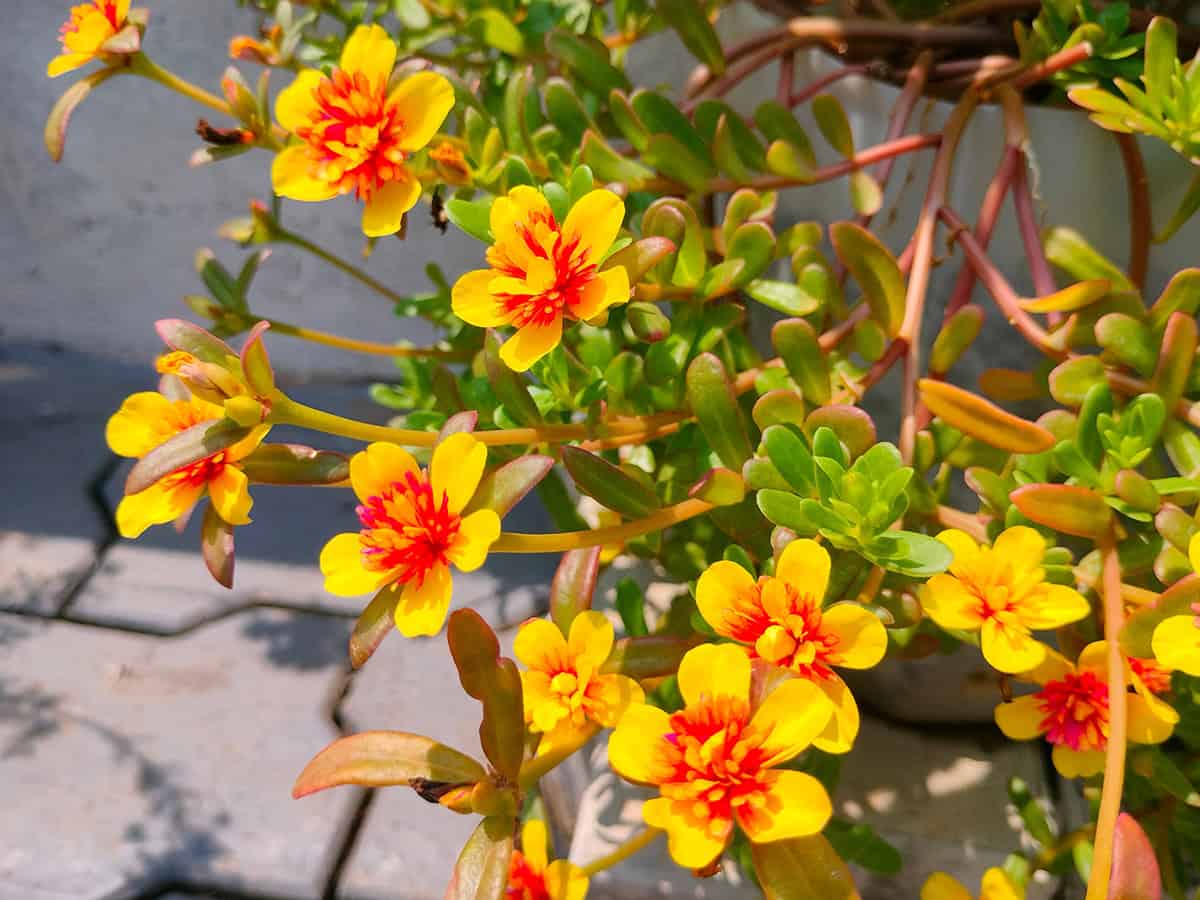
The ‘Sun Jewels’ variety offers a wealth of jewel-toned petals. These purslanes will make your garden sparkle with their durable and drought-resistant character.
Portulaca ‘Happy Hour’ Series
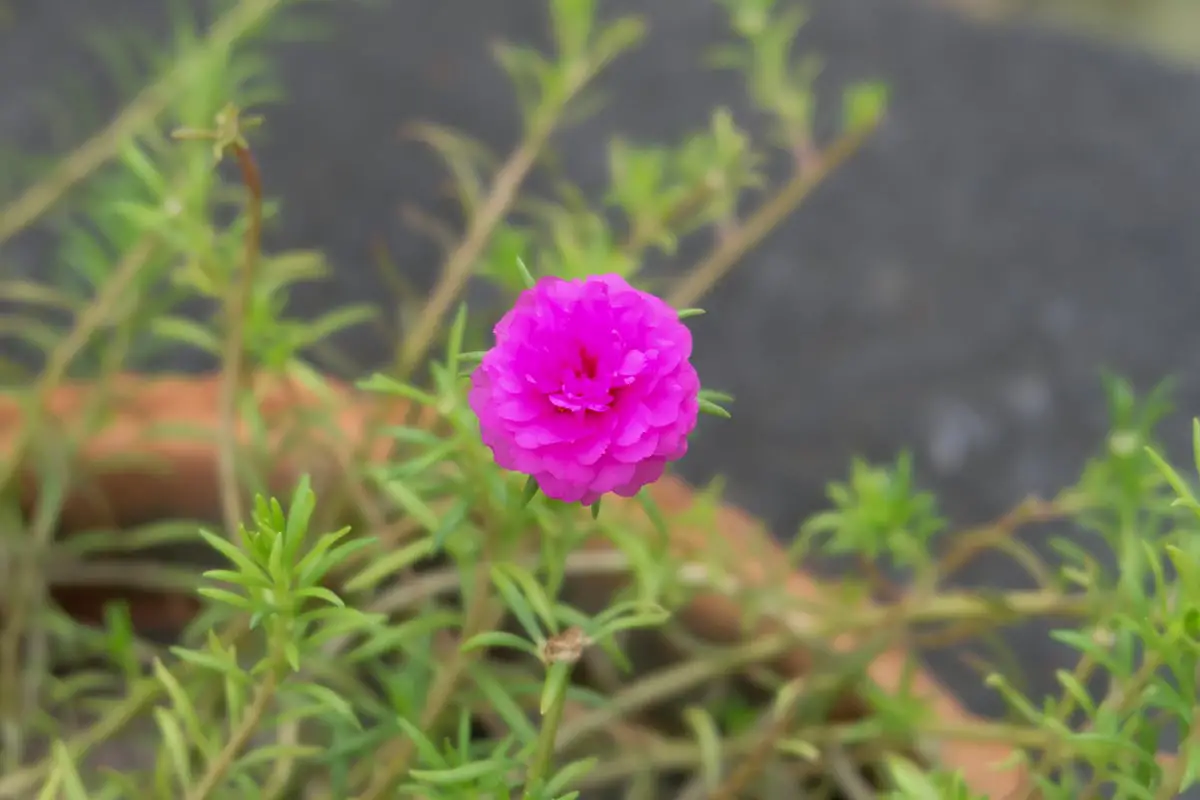
The ‘Happy Hour’ Series brings a festive vibe to gardens with its cocktail-inspired colors. Count on a continual bloom throughout the summer with minimal care.
Portulaca ‘Toucan’ Series
With the ‘Toucan’ Series, your garden becomes a tropical getaway. These purslanes exhibit vibrant hues that attract both your attention and butterflies.
Portulaca ‘Fairytales’ Series
The ‘Fairytales’ Series is perfect if you dream of mystical gardens. Delicate blooms and a mix of fairy-like colors will enchant you all season long.
